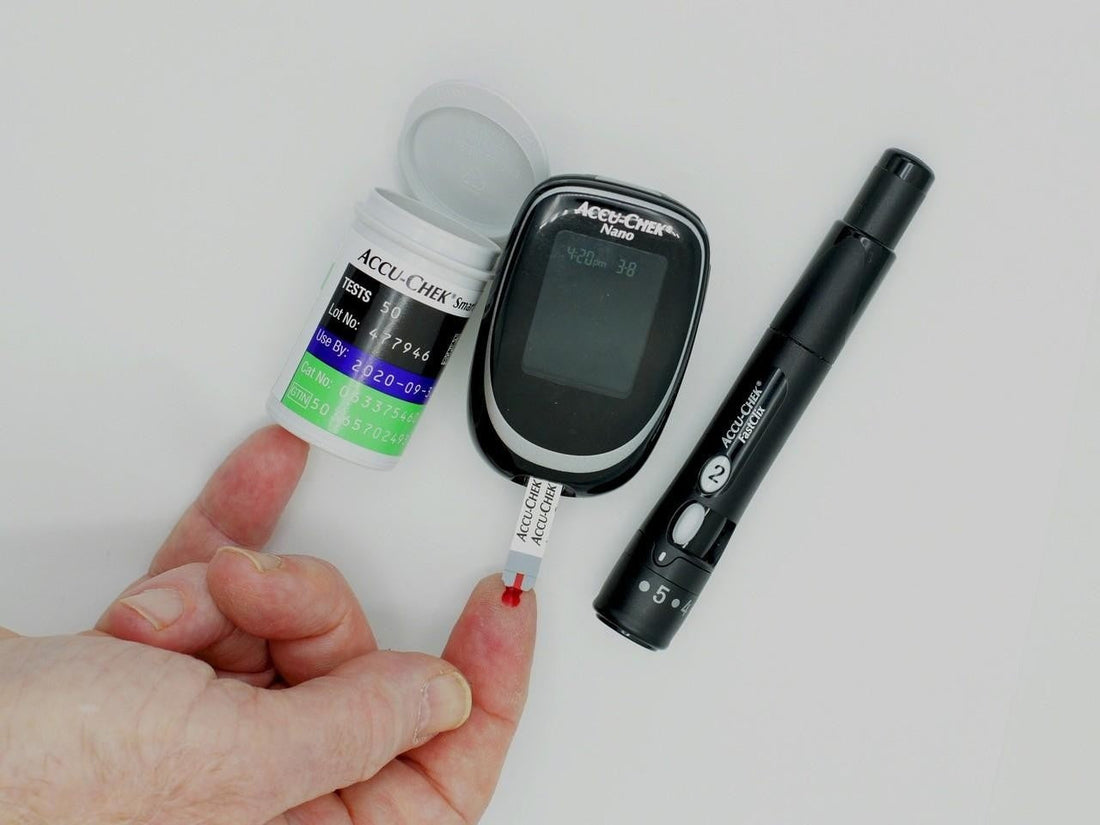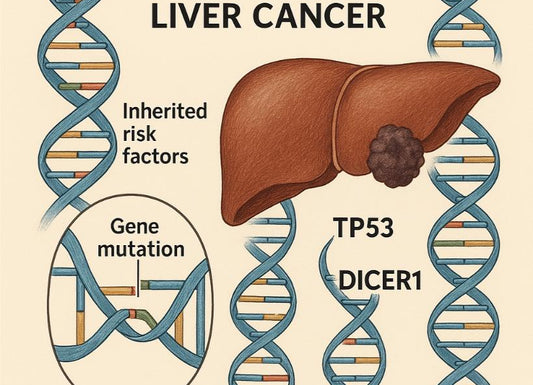Type 5 Diabetes: What You Need to Know About This Rare Condition
 Written By
Abel Tamirat, MD
Written By
Abel Tamirat, MD

Most people are familiar with type 1 and type 2 diabetes, and some may have heard of gestational diabetes or even type 3 diabetes, which is sometimes linked to Alzheimer’s disease. But what about type 5 diabetes? Though not widely recognized, the term is sometimes used in medical literature and communities to describe rare forms of diabetes connected to genetics, mitochondrial mutations, or pancreatic damage.
This guide explains what type 5 diabetes is, how it develops, the symptoms to watch for, how doctors make a diagnosis, and the treatments available.
What is Type 5 Diabetes?
Type 5 diabetes is not an official medical classification recognized by the American Diabetes Association or World Health Organization. Still, the label has been used to describe conditions that do not fit neatly into type 1 or type 2 categories. These include:
-
Mitochondrial diabetes, caused by inherited mutations in mitochondrial DNA.
-
Pancreatogenic diabetes, sometimes called type 3c, which develops after pancreatic disease, surgery, or injury.
-
Genetic or syndromic diabetes, such as Wolfram syndrome, a disorder that combines diabetes with other health problems.
Because the definition is inconsistent, it is important to clarify how a healthcare provider is using the term.
Causes of Type 5 Diabetes
The cause of type 5 diabetes depends on the underlying condition.
-
Mitochondrial diabetes results from defects in mitochondrial DNA, usually inherited from the mother. These mutations affect both insulin production and energy metabolism.
-
Wolfram syndrome is a rare genetic disorder marked by diabetes mellitus, diabetes insipidus, optic atrophy, and hearing loss. Symptoms often appear in childhood or adolescence.
-
Pancreatogenic diabetes develops when the pancreas is damaged by chronic pancreatitis, pancreatic cancer, or surgery.
Symptoms

The symptoms often overlap with those of other types of diabetes, such as increased thirst, frequent urination, unexplained weight loss, fatigue, and blurred vision. However, additional problems may occur depending on the subtype.
People with Wolfram syndrome may develop vision loss, hearing difficulties, or neurological changes. Those with mitochondrial diabetes may also experience muscle weakness and hearing loss. In pancreatogenic diabetes, digestive problems and frequent episodes of low blood sugar are more common.
Diagnosis
Diagnosing type 5 diabetes requires a careful review of medical history, lab tests, and sometimes genetic studies. Blood tests such as fasting glucose, hemoglobin A1C, and C-peptide levels help assess insulin production. Genetic testing may confirm mitochondrial mutations or Wolfram syndrome. Imaging tests are often needed when pancreatic disease is suspected. Because of the complexity, evaluation is usually done by an endocrinologist or geneticist.
Treatment Options

Treatment varies depending on the underlying cause but often includes insulin therapy, since many patients have reduced insulin production. Some people may begin with oral diabetes medications such as metformin or GLP-1 receptor agonists if their pancreas still produces some insulin.
In pancreatogenic diabetes, pancreatic enzyme replacement may be prescribed to aid digestion. Patients with Wolfram or mitochondrial diabetes may also need care for hearing, vision, or neurological symptoms. A multidisciplinary team—endocrinologists, neurologists, gastroenterologists, and genetic counselors—often works together to provide care.
Possible Complications
Like other types of diabetes, poorly controlled type 5 diabetes can lead to long-term complications including heart disease, kidney damage, eye disease, and nerve damage. In addition, unique complications may develop depending on the genetic or pancreatic condition involved.
How It Compares to Other Types
-
Type 1: Autoimmune destruction of insulin-producing cells.
-
Type 2: Insulin resistance, often linked to obesity and lifestyle.
-
Type 3c: Diabetes due to pancreatic disease or surgery.
-
Type 4: A proposed category linked to age-related insulin resistance.
-
Type 5: Rare, complex forms involving mitochondrial mutations, genetic syndromes, or pancreatic dysfunction.
Living with Type 5 Diabetes

Because type 5 diabetes is often part of a broader health condition, management can be more challenging than with type 1 or type 2. Regular glucose monitoring, whether with traditional meters or continuous monitors, is essential. A balanced diet, regular exercise, and avoiding smoking and alcohol remain cornerstones of care. Emotional support and counseling can also help patients and families cope with the impact of a rare diagnosis.
Research and Future Directions
Scientists are exploring genetic therapies for mitochondrial and Wolfram-related diabetes, as well as advanced insulin delivery systems and artificial pancreas technology. These innovations may lead to more personalized and effective treatments in the future.
Takeaway
Type 5 diabetes is not a standard medical classification but is sometimes used to describe rare, complex forms of diabetes linked to genetics, mitochondrial mutations, or pancreatic damage. Symptoms overlap with typical diabetes but may also include unique features like vision or hearing loss. While rare, type 5 diabetes requires careful, individualized treatment, often involving insulin and management of related conditions. Advances in genetic testing and diabetes technology are improving care, but early diagnosis and ongoing support remain essential for managing this condition.
Take the next step
Living with a rare form of diabetes can feel overwhelming, but you don’t have to face it alone. Our at-home testing and educational resources can help you track your health and work with your doctor to develop the right plan.
Related Resources
Curious about other rare forms of diabetes? Start here:
-
Type 3 Diabetes: What It Is – Understanding another rare classification.
-
Type 4 Diabetes: Understanding Age-Related Insulin Resistance – Learn about age-related insulin resistance.
-
Can Skinny People Get Diabetes? – Debunking myths around body type and diabetes.
References
CDC. (2024, July 18). Symptoms of Diabetes. Retrieved September 17, 2025, from Diabetes website: https://www.cdc.gov/diabetes/signs-symptoms/index.html
IDF launches new type 5 diabetes working group. (2025, August 19). Retrieved September 17, 2025, from International Diabetes Federation website: https://idf.org/news/new-type-5-diabetes-working-group/
Jebasingh, F., & Thomas, N. (2025). Type 5 Diabetes- The Rejuvenated Spirit from a Ghost of the Past. Indian Journal of Endocrinology and Metabolism, 29(3), 249–252. https://doi.org/10.4103/ijem.ijem_404_25
Type 5 Diabetes: What It Is, Symptoms & Treatment. (2025, July 30). Retrieved September 17, 2025, from Cleveland Clinic website: https://my.clevelandclinic.org/health/diseases/type-5-diabetes
World. (2024, November 14). Diabetes. Retrieved September 17, 2025, from Who.int website: https://www.who.int/news-room/fact-sheets/detail/diabetes

Dr. Abel Tamirat is a licensed General Practitioner and ECFMG-certified international medical graduate with over three years of experience supporting U.S.-based telehealth and primary care practices. As a freelance medical writer and Virtual Clinical Support Specialist, he blends frontline clinical expertise with a passion for health technology and evidence-based content. He is also a contributor to Continuing Medical Education (CME) programs.



